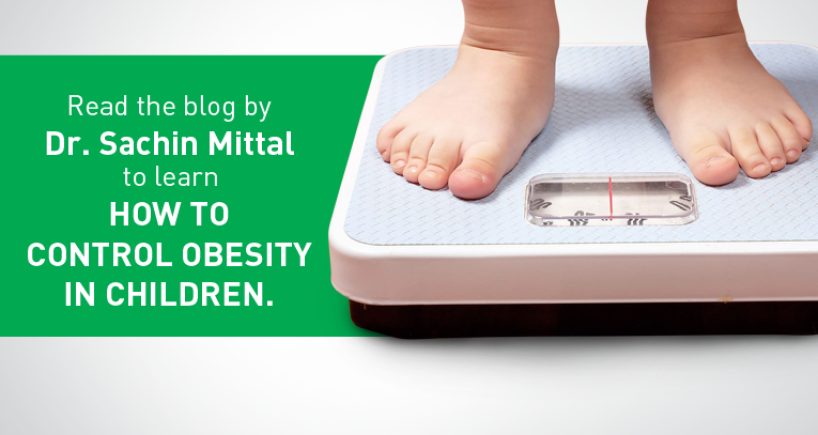
Childhood Obesity ? Lets Take It Head On

Obesity in children has increased exponentially over the last few decades. In the United States, at least 20% of children and adolescents are considered overweight or obese. In India also, there has been an alarming increase in the weight of children, with many researchers reaching similar figures among affluent urban children.
What has caused this rise?
The alarming increase has been fueled by the current environment of decreased physical activity and intake of calorie dense, often low in nutritive value foods. There has been a growing “Fast Food” culture with higher trend of eating out, bigger portion size and consumption of ready to eat packed foods. No wonder, international fast food chains are betting on India as their next growth driver. Marketing strategies typically target children to get them on these so called snacks, carbonated beverages from a young age. Go to any supermarket store, candies and chocolates are always placed near the cash counters to increase the sale of these stuff- so called impulse purchases by the customers. This coupled with a sedentary lifestyle and decreased physically activity make a potentially deadly cocktail. Modes of transportation have become better and better and as a result more and more drive rather than walk and cycle for not so long distances. Central Board of Secondary education (CBSE) reported in 2007 that only 30% of adolescents play an hour or more. Typically kids spend more time watching TV, sitting in front of computer or playing video games rather than outdoor games.
Consequences of Obesity
Obesity and Normal Development
Obesity has a potential to derail a child’s normal development. Obese children are more often teased and bullied in school. They are less likely to participate actively and enthusiastically in social and extracurricular activities than normal children. Many of them have poor self-perception, especially with regard to their physical appearance and thus there is a higher chance of depression and development of low self-esteem in these children.
Obesity and Diabetes and Cardiovascular Disease
Obesity is associated with abnormalities of insulin and glucose metabolism and thus increased chances of developing Type 2 Diabetes Mellitus (T2DM). In fact, exponential increase in childhood obesity is the predominant reason, why T2DM, which has been mainly considered a disease of adults is also seen in children now a days.
Obesity and Hypertension
Obesity leads to increased chance of high blood pressure and high cholesterol levels, a trend increasingly seen even in obese adolescents, these days. The above combination of factors is well known to increased risk of heart disease in later life.
Obesity and Polycystic Ovarian Syndrome (PCOS)
Polycystic Ovarian Syndrome (PCOS)- a hormone disorder where there is a constellation of symptoms like irregular menses, acne, excess abnormal hair on face and body and higher chances of infertility later in life, is more commonly seen and is more severe in obese as compared to normal adolescents.
Apart from these, obese children have higher chances of breathing difficulty due asthma or sleep apnea, higher chances of gall stones, kidney diseases, pubertal problems and bone problems.
When can Obesity be due to medical causes?
In some cases, obesity can be due to various hormonal causes like thyroid abnormalities or steroid excess in the body or it can be due to some rare genetic or syndromic causes. In some cases, the clue to such a hormonal cause is when the weight increases but the height does not increase correspondingly. And often this can be accompanied by pubertal problems. So a medical evaluation is helpful.
What can we do to tackle the menace?
The below mentioned recommendations have been found to be helpful in tacking this growing menace. The earlier we start, the better and easier it is for the child. After all it can be a lifelong chronic disease, with potentially devastating complications and accelerates many of the “adult diseases” in to childhood.Early obesity treatment and care can save people from a lot of hassles alongside preventing related chronic diseases.
* Decrease the consumption of sweetened carbonated beverages
* Limit watching of TV (0 hours <2 years, <2 hours >2 years old).
* Remove TV from primary sleeping area
* Eat breakfast daily
* Limit eating out and limit consumption of energy dense foods.
* Do not replace snacks for meals
* Encourage family meals
* Limit portion size
* Eat a diet with balanced macronutrients, rich in calcium & high in fiber
* Breastfeeding
* Promote moderate-vigorous activity 60 minutes a day.
श्रेणियाँ
सभी साफ करेंMeet the doctor

- Diabetology/Endocrinology | Endocrinology
-
10 Years
-
1550


















